As any lawn care professional will tell you, one of the worst-kept secrets when it comes to maintaining green and thriving grass is overseeding.
By incorporating this simple practice into your lawn care routine, you can ensure your grass remains in optimum condition year-round, year after year. And to help, in this post, we tell you everything you need to know about how to overseed a lawn.
If you want a preview of some of the stuff we’re going to be talking about, you can also check out this video before reading on!
What is overseeding?
Let’s start right at the beginning – what is overseeding?
Overseeding is the practice of adding grass seed to your existing lawn to help thicken up the growth and to repair damaged or thin areas of grass.
It allows new grass to grow among the grass that is already there, so it is a convenient way to perk up your lawn without doing any major work.
Overseeding is different from reseeding because reseeding is done when there is no grass left at all. Reseeding is when you essentially remove the grass from your lawn and start again from scratch – while overseeding is a much less drastic measure.
Why should you overseed your lawn?
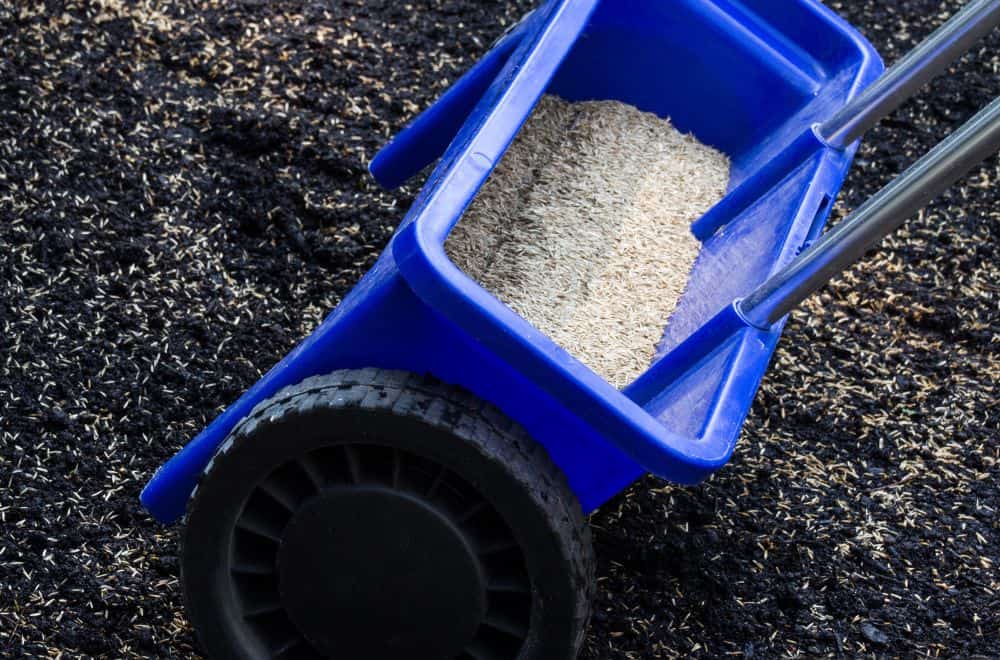
We’ve already mentioned that overseeding is a not particularly well-kept secret, and any pro will recommend it to you. However, there can sometimes be a level of misunderstanding by gardening amateurs and homeowners when it comes to the practice.
In short, most homeowners see overseeding as a remedial option – they wait until their lawns start looking sparse and ragged and then use overseeding as a way of restoring their lawns to their former condition.
Professional gardeners and lawn care experts, on the other hand, see reseeding as an integral part of the annual routine of lawn care. For them, overseeding is done to prevent the lawn from deteriorating rather than to return it to health after the damage has been done.
When used this way – and when combined with all the other lawn care best practices that any lawn owner should follow – overseeding will allow you to keep your lawn looking perfect all the time.
Overseeding like this will help your lawn stay thick and lush, it will prevent bare patches from appearing, it will improve your lawn’s resistance to foot traffic and general wear, and it will improve its color and overall appearance.
At the same, it will also help prevent weeds from becoming established in your lawn since thick and healthy grass is the best defense against unwelcome invaders.
Of course, if your lawn does need a bit of perking up, overseeding can also be used – but if you remember to do it each year as a matter of course, things should never reach this point in the first place.
That said, check out this video for the kind of lawn rescue you can attempt just by overseeding.
When to overseed lawn?
Generally speaking, the US can be divided into two halves – the colder northern regions and the warmer southern areas.
This is one of the most important factors to take into account when thinking about overseeding because it affects several of the choices you have to make, including the key consideration of the best time for overseeding.
If you live in the northern US, the best time to overseed is at the end of the summer or the start of fall. This is because the warm soil at this time will help with germination while the cooler air will encourage growth. Weeds are also less active at this time of year.
The alternative, although slightly less preferable, is to overseed in springtime when conditions are similar – although your new grass will have more competition from weed growth at this time.
If you live in the southern half of the US, to thicken your lawn, overseed with warm-season grass in the spring to allow it to become established during the growing season.
Alternatively, to help maintain the color of your lawn, you should overseed with cool-season grass in the fall. This grass will then keep your lawn looking green during the winter when warm-season grass tends to go brown.
Choosing your grass for overseeding
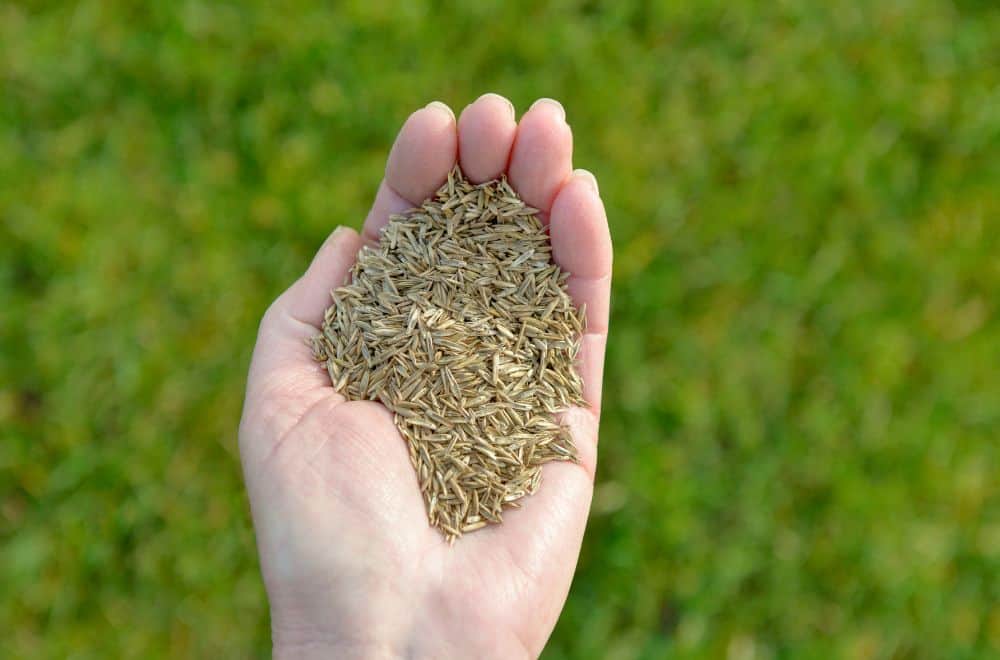
Another factor to consider that will be determined by where you live is the type of grass you choose – but the choice of grass also depends on what you hope to achieve.
If you live in the northern half of the country, choose a grass that is suitable for the climate – and it makes sense to choose the same kind you already have it your lawn.
Choosing a species that spreads by rhizomes, stems that grow beneath the ground, will also help the grass fill out any bare areas more effectively.
In the south, you have two options. If your goal is to fill in bare patches, choose the same warm-season grass that makes up the rest of your lawn. However, to maintain the color through the winter, choose a cool-season species that will do well during the winter.
Another factor you need to think about is what your lawn will be used for. If your lawn is largely ornamental, you can choose more delicate species – but if it is destined to have children and pets running and playing on it, you need to opt for something hardier.
Of course, not all grass seed is the same, so whichever type you choose, make sure you use seed of high quality.
Preparing the ground
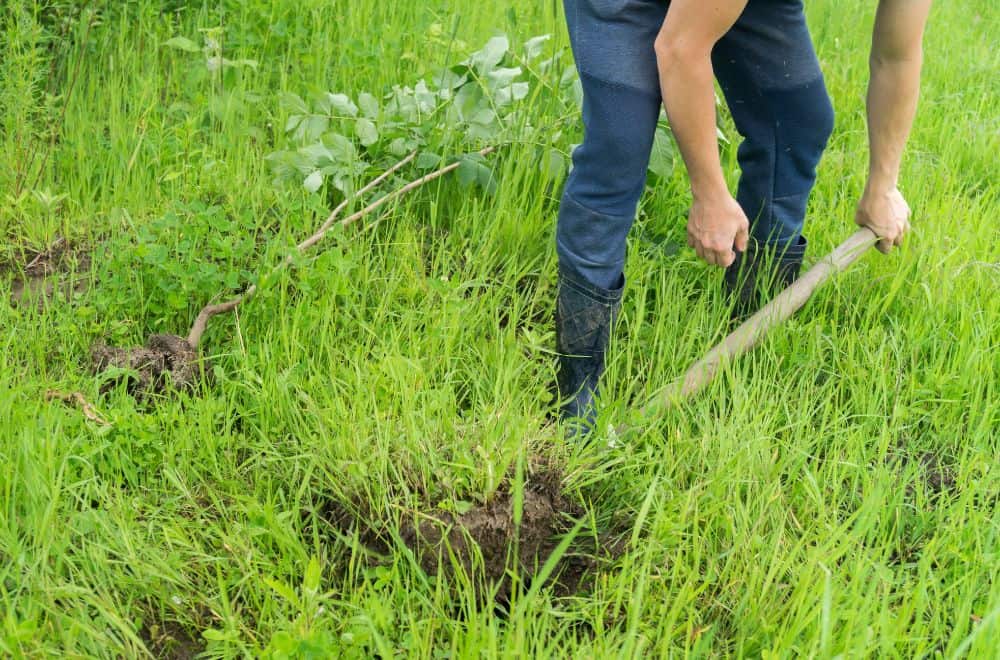
Once you have chosen the time of year for overseeding and have decided which grass species or mix to use, the next step is to prepare the ground.
Begin by mowing your lawn shorter than you would normally do it. For cool-season grasses, cut to about one inch; for warm-season grasses, cut as short as your mower will allow.
This will give the grass seeds the most access to the necessary sunlight, warmth and moisture they need to germinate and grow.
After removing all the clippings from your lawn, next take a rake and remove any thatch that has formed in your lawn. If the growth is especially thick, you might be better off doing this with a special machine.
Next, take a garden fork and spike the ground to a depth of about six inches at intervals of around every foot.
If your lawn hasn’t been fed recently, it’s a good idea to do it before overseeding – you can add lawn fertilizer a few days before you begin spreading the seed. However, if you have used herbicide or weed killer recently, you will need to wait at least four months before reseeding.
Here’s a video that goes through some of the steps for preparing your lawn for overseeding.
Sow the seed
When the ground is ready and you have finished all the necessary preparations, you can start sowing the seed. Make sure you read the directions on the seed packaging so you know how much to use.
Spreading the seed too thickly will create too much competition for resources among the grass plants, and the new grass won’t be able to grow properly. However, spreading too thinly will leave your lawn too sparse while also giving weeds the chance to become established.
If you only have a small area to overseed, you can do it by hand, but for larger areas, for speed and convenience – as well as for the best results – you can use a spreading machine.
As a tip, avoid sowing your grass seed on windy days. If it is too windy, you won’t be able to sow accurately as the seed will be blown in the wind – and once it’s on the ground, it might also be blown away.
Caring for your overseeded lawn
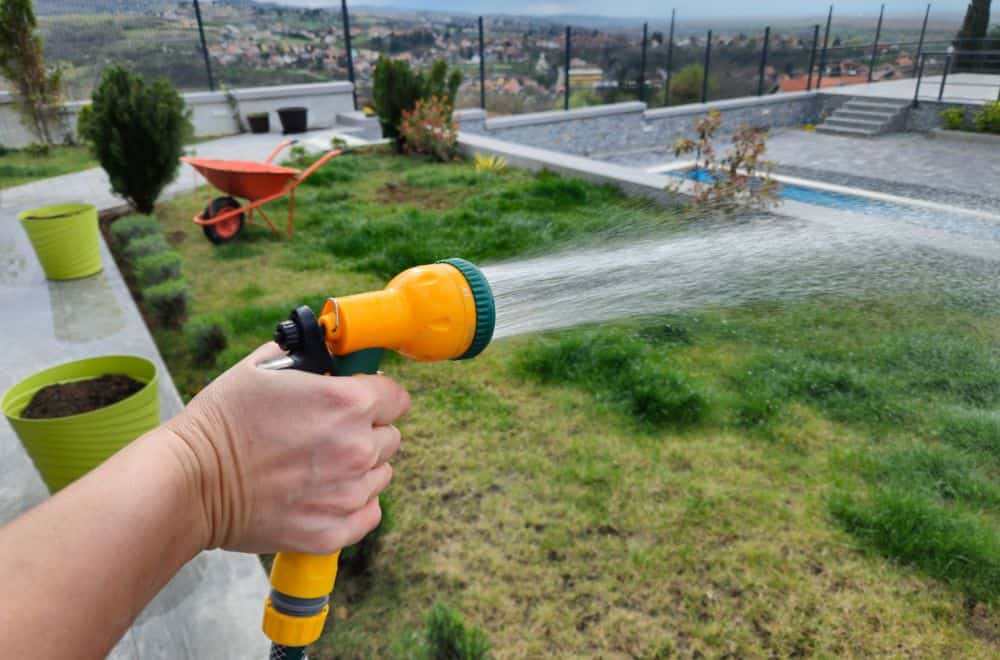
Once you have sown the seed, you then need to look after it to ensure it grows quickly and healthily.
The soil needs to remain moist for the seed to germinate, so you’ll need to water your lawn as required. This will depend on the climate where you live, and you may need to do it every day or two, or every few days.
How you water it also varies. At the beginning, you should water lightly but often. However, after the first week, your lawn will benefit more from deeper but less frequent waterings.
You will also need to protect the lawn from birds. You can use a scarecrow or something similar, but if possible, the most effective way to keep birds away from your freshly seeded lawn is to use protective netting.
Finally, reduce the amount of foot traffic on the lawn for at least the first three weeks after overseeding. This will allow the grass to grow strong and become well established, giving it the strength to resist being walked on.
Depending on where you live, germination should occur within one to three weeks, so if you can avoid walking on it for even longer, it will give the grass more time to grow.
Mowing your lawn and regular lawn maintenance
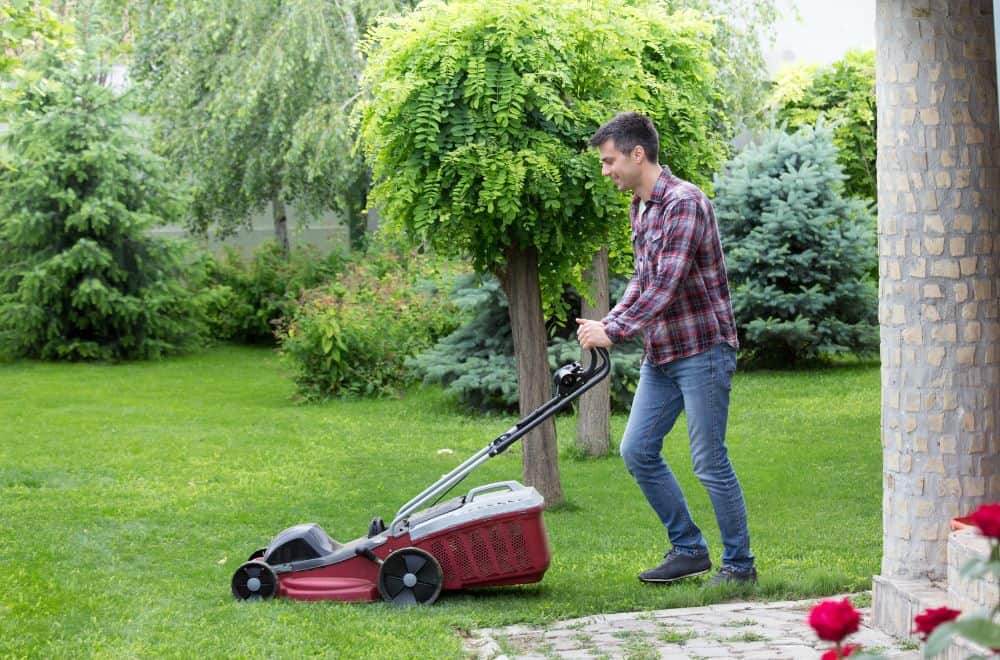
After two or three weeks, you can begin mowing your new lawn as required. As a guide, for the first two or three times, cut the grass no shorter than two inches. Thereafter, you can cut it down to as short as one inch.
However, remember to always follow the rule of never taking more than a quarter or a third of the length of the grass off in one go.
Once you reach this point, the process is complete and the new grass is fully established. After this, you should return to your regular maintenance routine and can treat the new grass just the same as the rest of your lawn.
A few mistakes to avoid
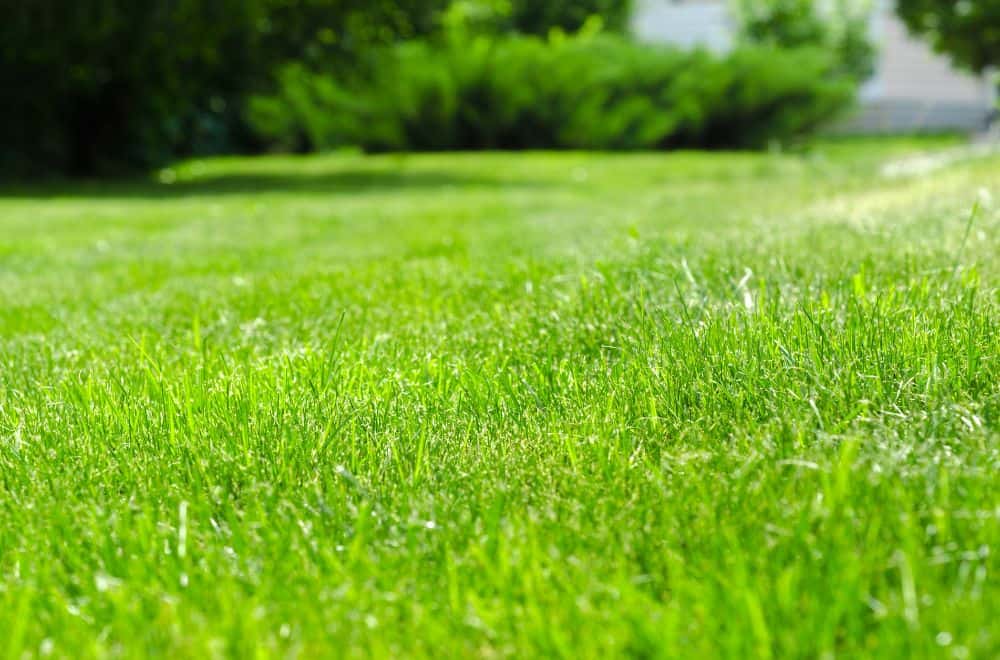
It might seem that overseeding is a simple operation – and it is when you know how to do it – by you can still do it wrong, so let’s remind ourselves of some of the common rookie mistakes you should look to avoid.
We already touched on choosing the wrong seed for overseeding, but it’s worth stressing the point again. Not all grass species are the same, so you should choose a species or a mix that is suitable for your climate as well as for your overseeding aims and the planned use of the lawn.
Another point we mentioned before is that you need to use the right amount of seed for the job. If you spread the seed to densely, the baby grass plants will smother each other and they will all suffer. This is why it’s important to know how thickly to spread your seed.
Other mistakes to avoid include overseeding at the wrong time and overseeding too soon after using herbicide on your lawn, so make sure you avoid these errors to obtain the best results.
When not to overseed
There are times when overseeding is not the preferred solution. For example, if your lawn is already in a very poor state, it might be better to consider pulling it all up and starting again – either by reseeding completely or by laying sod.
Sometimes, this kind of reset is recommended rather than fighting a losing battle trying to return a lawn to its former glory.
Similarly, if a lawn has been taken over by weeds – usually around 40-50% or more – you are probably also better off hitting the reset button and starting again.
If the lawn is full of weeds, the new grass that you are overseeding will have trouble establishing itself, and you may find you end up wasting a lot of money on grass seed with very little to show for it.
Overseeding as part of your annual cycle of lawn care
Every year, you should follow the same cycle of best practices to care for your lawn, and part of this should be overseeding. This way, you will help keep your lawn in optimum condition with minimal effort.
As you can see from our guide, overseeding is relatively simple, and as long as you avoid a few common mistakes, overseeding is a practice that is guaranteed to produce consistently excellent results.
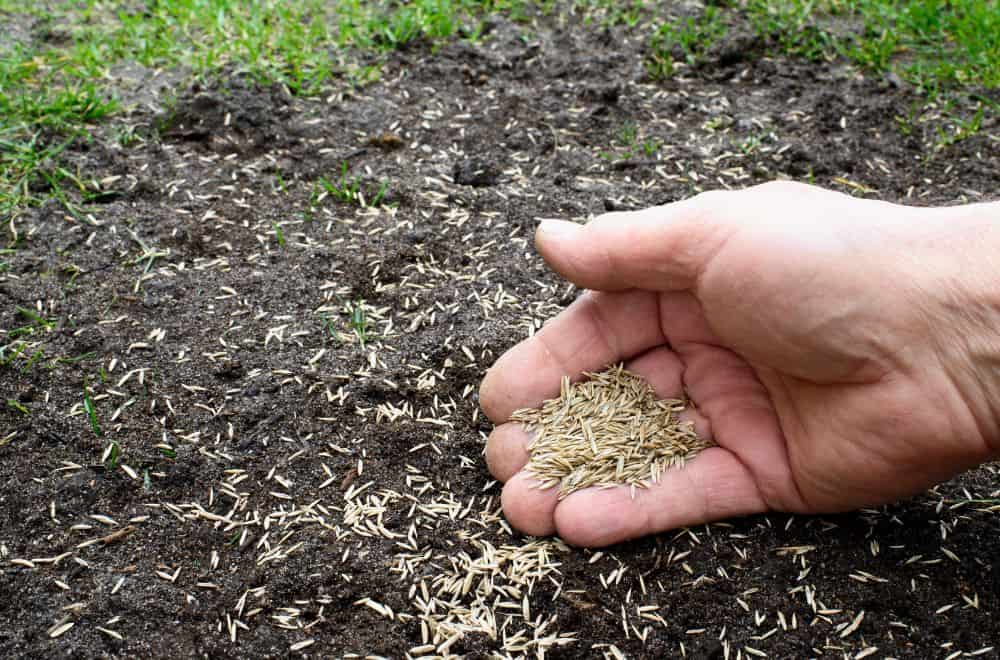
Leave a comment